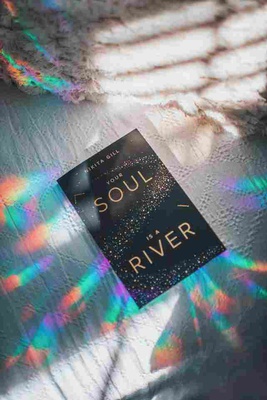A Guide on How to Judge a Book by Its Cover

We're not meant to do it, but evaluating a book by its cover is a skill we all have. Whether we're standing in a crowded Barnes & Noble or peering at a screen full of thumbnails, a book's cover is often all we have time to look at. Sure, in an ideal world, you'd linger over each book, smelling the paper and reading large sections of the text to see if it was written specifically for you. However, in fact, we rarely have the time. As a result, being able to discern the type of book you're dealing with—and deciding whether or not it's what you need in your life—is a crucial talent.
Yes, people make snap judgments about books based on their covers.
It's the truth; it's the way things are.
Consider exploring Amazon's website's numerous rows and columns of books for sale - you've probably done it recently. A few major characteristics of the books mentioned there come to mind: title, price, availability information, and shipping alternatives.
The cover, though, is the first thing you'll notice.
Amazon — and any other online bookstore such as Usedbooksfactory for second hand books – prominently display book covers, whether it's a "Big 6" published super-seller or an obscure volume used for an advanced science class.
Here are some pointers for judging books based on their covers.
Blurbs
These are quotes from other writers or reviews concerning the book you're holding in your hands. On the front cover, you'll usually find 1-2 of these, along with a statement or phrase that briefly defines the book. It's all too easy to skim over book blurbs and overlook their significance when making a decision regarding a book. However, we believe that book blurbs are crucial. Always look into the authors' identities or the origins of the book blurbs. There's a strong possibility you've heard of the author before, and if you enjoyed their previous works, chances are you'll enjoy the book you're holding in your hands as well.
Covers Matter
Whether you like to believe it or not, your judgment of the last book you bought was influenced – to some extent — by these characteristics. Even if you only bought your nephew's latest self-published fantasy novel for the sake of posterity and brownie points, you couldn't help but notice the cover.
And most individuals will let that bias, whether conscious or unconscious, influence their overall assessment of the book.
Your book's cover is crucial. It can result in more (or fewer) sales, allow you to charge a greater price by sending a message of quality, and give you reputation as an expert on your subject. By investing in a superb cover design, you'll be able to avoid many of the potential "buyer issues" listed below. (Please note that these are only examples of possible buyer dilemmas.) We’re sure none of you would ever consider this in the case of an actual book!):
- "This book appears to be on a shoestring budget." I'd rather spend my money on something that requires a little more work."
- "This book appears to be unprofessional." I'm not sure if the author is as 'skilled' as he claims."
- "This book does not have the appearance of a [thriller, mystery, literary, etc.] book."
Whether you like it or not, your potential readers may be thinking about your work in these ways.
Instead, eliminate these three possibilities from your customer's thoughts and leave them with only one option: "I don't like the cover design, but that's just me."
Allow just the subjectivity of a "wonderful" design to be a caveat for your readers.
-
Cover Design
At first sight, this is what you'll most likely assess a book by, and you might be surprised at how little the cover actually reveals about the tale between its pages. Actually, there's a lot you can figure out just by looking through a book. Publishers invest on cover art because they recognize that it is frequently the deciding factor in whether or not a person would buy a book. Colour schemes, fonts, and image style all play a part in your first impression of what you expect a book will be about.
Picture books are the easiest to appraise based on their covers because the cover art will match the inside images, allowing you to quickly learn about the characters and plot elements.
When you look at the covers of adult books, you'll most certainly judge them depending on their genre. On the cover of most fantasy and science fiction books, there is usually a vision that would be impossible to happen in real life. Romance novel covers are meant to evoke feelings of love, thus you'll see 1-3 people on them, and you might even be able to guess how spicy a romance will be depending on how much clothing they're wearing. Mysteries and horror books typically have darker coloured covers to create a sense of anticipation before you ever open the pages. The title of nonfiction books is typically written in a large, easy-to-read font. You're probably already aware of similarities between the covers of books you like to read.
-
Covers for Nonfiction and Fiction
Take a look at the covers of your favourite professionally created books. What do you think you see? They most likely "fit" into the genre:
- Literary novels frequently have a whimsical, decorative, or cursive-stylized title font with gentle shades of colour and sometimes a thoughtful picture or imagery, but nonfiction advice or self-help books often have a photo of the author-as-expert surrounded by a blocky title font.
- A man or woman (or both) is frequently caught in a close hug, intense gaze, or other "love" pose on the cover of a romance novel...
- The author's name and title are superimposed on a pictorial representation of a significant story aspect on thriller or action/adventure covers in large, strong font.
Of course, there are exceptions; for every work that meets the above criteria, we’re confident you'll find another that doesn't. The idea is that while looking for a book to satisfy their reading tastes, readers have certain "expectations," and it all starts with the cover.
Why would you create anything that doesn't fit into that archetype if you know that most books in your category have a mysterious or spooky shape and a fearful young protagonist?
You're not trying to be a copycat; instead, you're attempting to remove as many barriers to the sale as possible. We all know how difficult it is to persuade people to buy your book over a competitor's.
-
Back Cover
Remember to flip the book over and look at the back cover as well. If the author has previously authored books, there will most likely be more blurbs, a synopsis, or even reviews of the author's overall style.
Digital Books
The same cannot be true for E. L. James' Fifty Shades of Grey. James' novel, which was published in 2011, was the publishing phenomena of the year, selling 125 million copies worldwide. However, cover of the book was unremarkable: an image of a knotted tie against a dark background. But what makes Fifty Shades of Grey so extraordinary is that it was published at a time when readers could enjoy the book in public without fear of being scrutinized for their reading habits. This is owing to the introduction of e-readers like the Kindle, which hide the book's cover.
To the untrained eye, a Kindle reader appears to be reading anything. But it is also due to this technology that a new renaissance in book design is taking place. Fearing that e-books may "kill out" the physical book, publishers have begun to put more care into the design of their physical books.
A quick glance at the shelves in bookstores reveals that publishers are attempting to highlight the unique qualities of the physical book: classic hardbacks are embossed with beautiful decorative patterns and typography, while contemporary fiction happily incorporates imagery and styles from the history of the visual arts. This is why #bookstagram is so culturally significant: it celebrates the physical substance of the book through the digital medium.
What exactly is the objective of all this "cover talk"?
This argument isn't intended to persuade you that your cover is the only thing that matters - far from it. A fantastic cover design is simply one of many factors that contribute to a successful book launch and ongoing sales.
A book's cover is one of the first (and possibly only) items a potential reader looks at before deciding whether or not to buy it. By investing in a fantastic design, you're encouraging them to spend a little more time on your sales page.
So, the question remains: should you try to design a cover yourself or should you pay for a high-quality, professionally-designed cover?
While we can’t definitively answer that for each and every one of you, we can say with much certainty, “it’s probably best to pay for one.” Here’s why:
- Having an objective set of eyes on your book will be beneficial. Your reader may not think a certain element from your story needs to go on the cover just because you think it does.
- A professional is exactly what it says on the tin. That means you have the right to hold them accountable for creating a wonderful cover that meets your expectations, within reason. It's easy to get out of hand and become a client from hell, but getting back the cover of your dreams is just as simple.
- Professionals have previously "been there." They've worked with other authors and intuitively know what will appeal to your genre's target audience. You may know what works in a story arc for that genre, but they know how to use typeface and color.
- It helps you save a lot of time. Even if you're a world-class designer, how valuable is your time? Instead of designing the cover, could you be preparing the launch, revising a part, or conducting another self-edit?
- It is cost-effective. Cover design, believe it or not, is one of the most affordable aspects of professional book design (in comparison to editing, layout/formatting, proofreading, and so on). We’ve seen fantastic covers for under $200, and while you can spend a lot more, there's usually no reason to go broke doing it.
It appears to us that the majority of the time when a self-published author chooses to "go it alone" and create their own cover, it's not because they're interested in the DIY element of self-publishing, but because they want their book out as soon as possible.
There's nothing wrong with it; many self-published authors prefer it to "conventional" publication because it allows them to get their book out faster. However, rather than becoming more efficient, they compromise on quality.
It takes time to get a fantastic cover designed — sending proofs and modifications back and forth, making money, waiting for a response — but that time could be better spent polishing your book into the greatest possible version of itself.



Comments